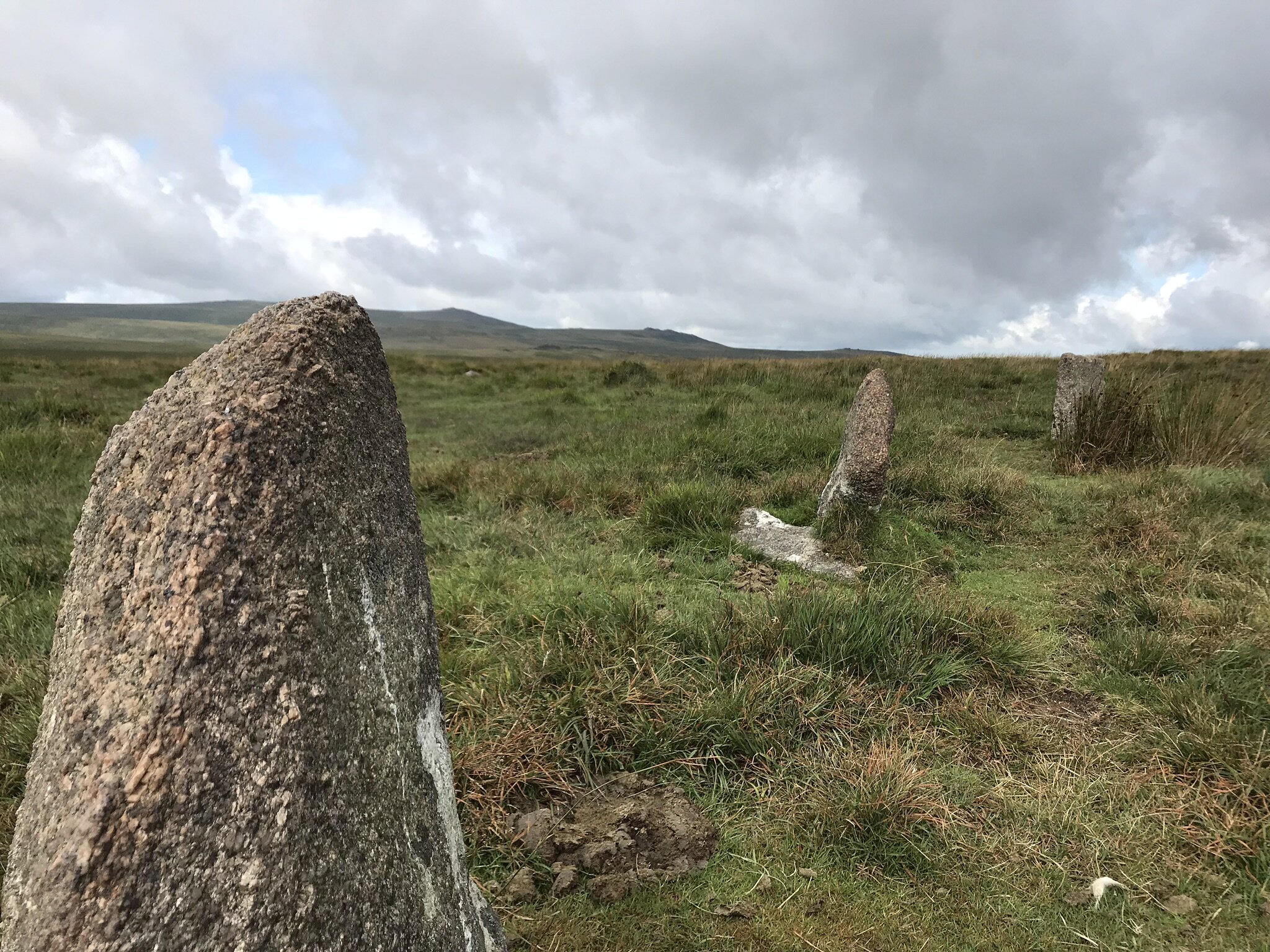by Colin Burbidge
Reverend John Ingle, Rector of St. Olaves church in Exeter was a man of many parts, combative priest, incessant letter writer, pamphleteer, occasional lecturer, and soon to be a landowner at Murchington. In November 1863 he gave a talk on “Dartmoor”
View of Dartmoor from Scorhill stone circle
On November 6th, 1863, The “Western Times” published a witty review of his lecture.
“DOING DARTMOOR”
“The pleasantest three half hours the Literary Society and its friends have enjoyed at a lecture for a long time were spent on Wednesday night hearing the Rev. John Ingle give a free and easy account of his rambles and scrambles on Dartmoor. John Ingle is a favourite in the lecture room as was proved last night by the crowded state of the theatre which was thronged from floor to ceiling.
A Dartmoor Tor
He has a manly presence, a goodly crop of beard flourishes in the soil meant for its growth: his voice is clear, and he reads well, though he is no slave to his manuscript, makes himself at home with his audience; lightens his graver talk with gleams of wit and humour. Would you believe it, if you were not told that this same genial clever “companion de voyage” is that Priest Ingle the curate of St. Olaves who delivered that poor bit of half-popish talk about All Saints Day! How two such ill-agreeing characters should be beneath one hat must move our special wonder.
Doing Dartmoor is becoming quite the fashionable thing in Exeter, as many a weary leg, wet jacket and wasted purse could bear witness this last summer. A “Handy Book of Dartmoor” is likely to become a desideratum. Mr. Ingle’s lecture would furnish the substance of such a book. He describes how you might get there –by steam, by team or by ten-toes.
Nor does he forget the commissariat, it is no land where meagre diet or short commons are agreeable; and it is not a land flowing with milk and honey.
His counsel is that intending travellers to Dartmoor bethink them of the claims their stomach will make on them and provide accordingly. He and a friend were there for four days, and bacon and egg, egg and bacon was all the variety they had to play upon.
Mr. Ingle generously offered to give the benefit of his experience to anyone intending to make a tour of our Dartmoor Alps. This brings me back to the Handy Book – let him compile such a book and the traveller will find the convenience of having it always to hand. The lecturer was heartily applauded.”
View across Dartmoor














